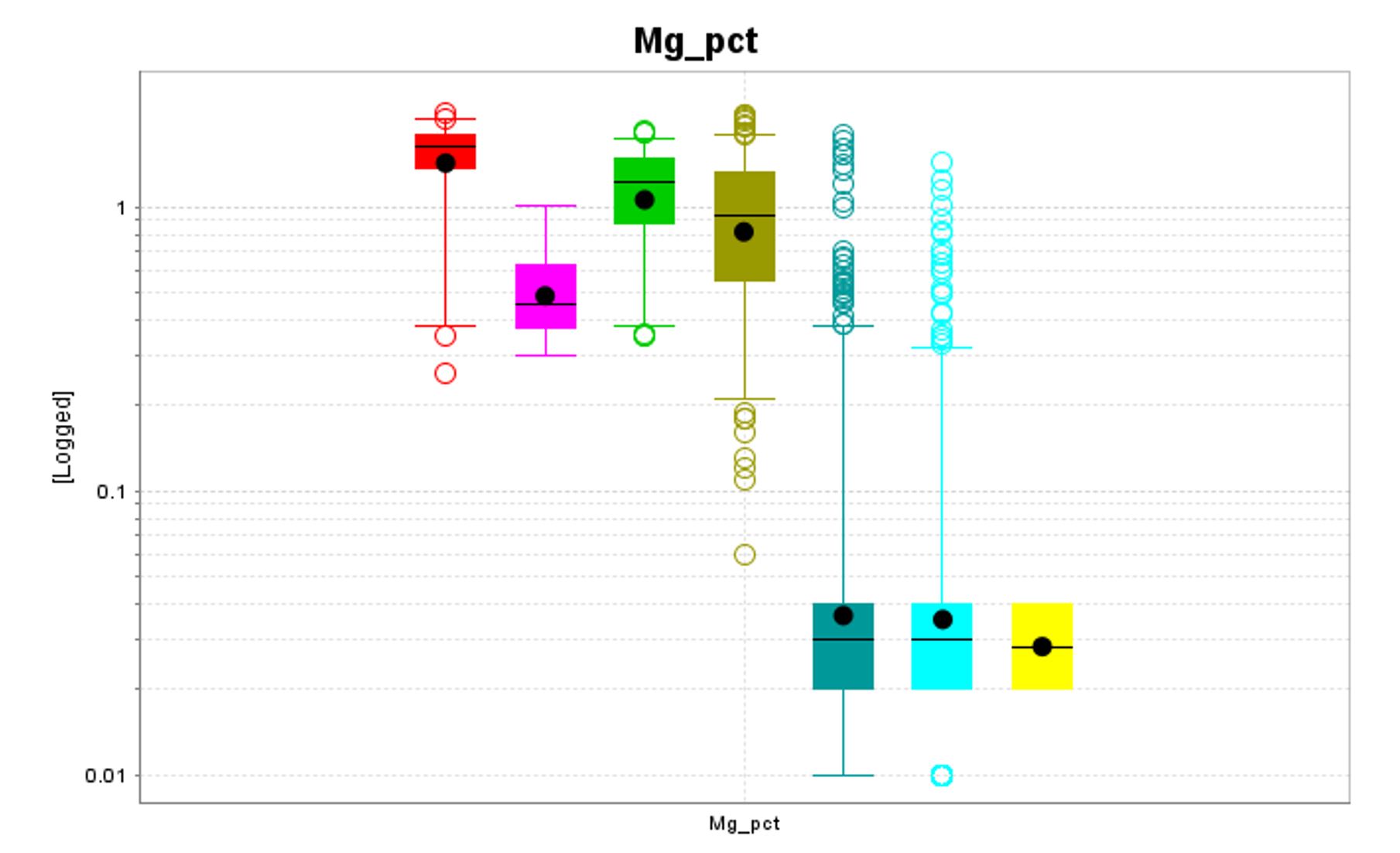Geochemistry to predict alteration types
Overview
In this research, advanced statistical and machine learning techniques are applied to geochemical data and geological logging information to automate the definition of alteration types in a statistically consistent and robust way.

Alteration types are logged by geologists, but the logging is not consistent due to the difficult nature of the problem.
We use geochemical data to determine the most discriminant features of the elements concentrations and build a predictive model to match the alteration types logged.


Several predictive models are developed, trained and validated. These include:
- Simple univariate discrimination based on single elements.
- k-means clustering
- Logistic regression
- Artificial Neural Network
Comparison is performed via a ROC curve:

The selected model is based on an artificial neural network and reaches a 77% match with the logged alteration types.

The model is then automatically applied to all the samples that have geochemical analysis and the alteration type is predicted accordingly.
This provides a “predicted” map of alteration types that can be used to identify areas where the logging is unreliable, or zones where a relogging may be required.

Future work
Research is currently focusing on knowledge discovery to draw insight from large geochemical and mineralogical datasets and help in guiding mineral exploration and ore deposit models.
References
- Miranda, R. (2015) Multivariate Analysis of Alterations, M.Sc. Thesis in Mining Engineering, Universidad de Chile, 204 p.
- Ortiz JM (2017) Geometallurgical workflows to optimize mining decisions, CIM public lecture, McGill University, March 29, 2017, Montreal, QC, Canada.
- Ortiz JM, Kracht W, Townley B, Lois P, Cardenas E, Miranda R, Alvarez M (2015) Workflows in geometallurgical prediction: challenges and outlook, 17th Annual Conference IAMG 2015, September 5-13, 2015, Freiberg, Germany.
